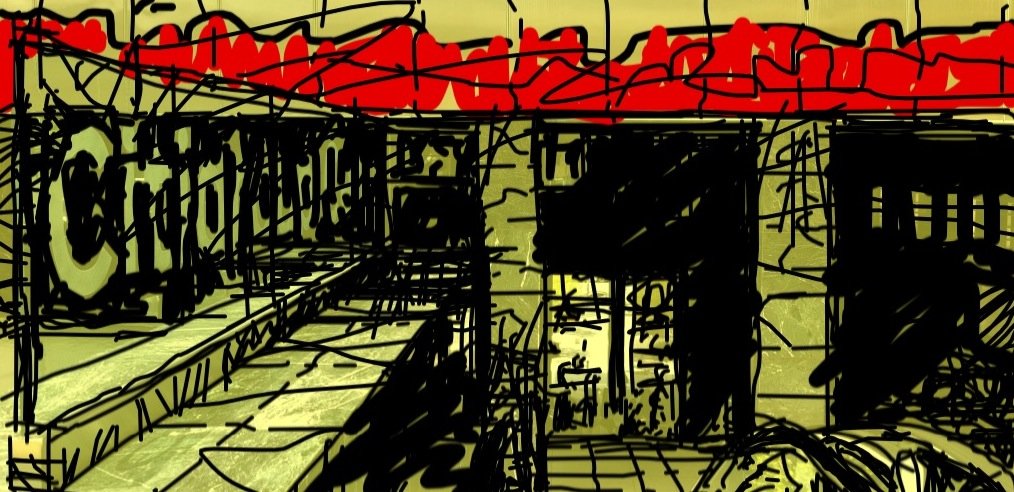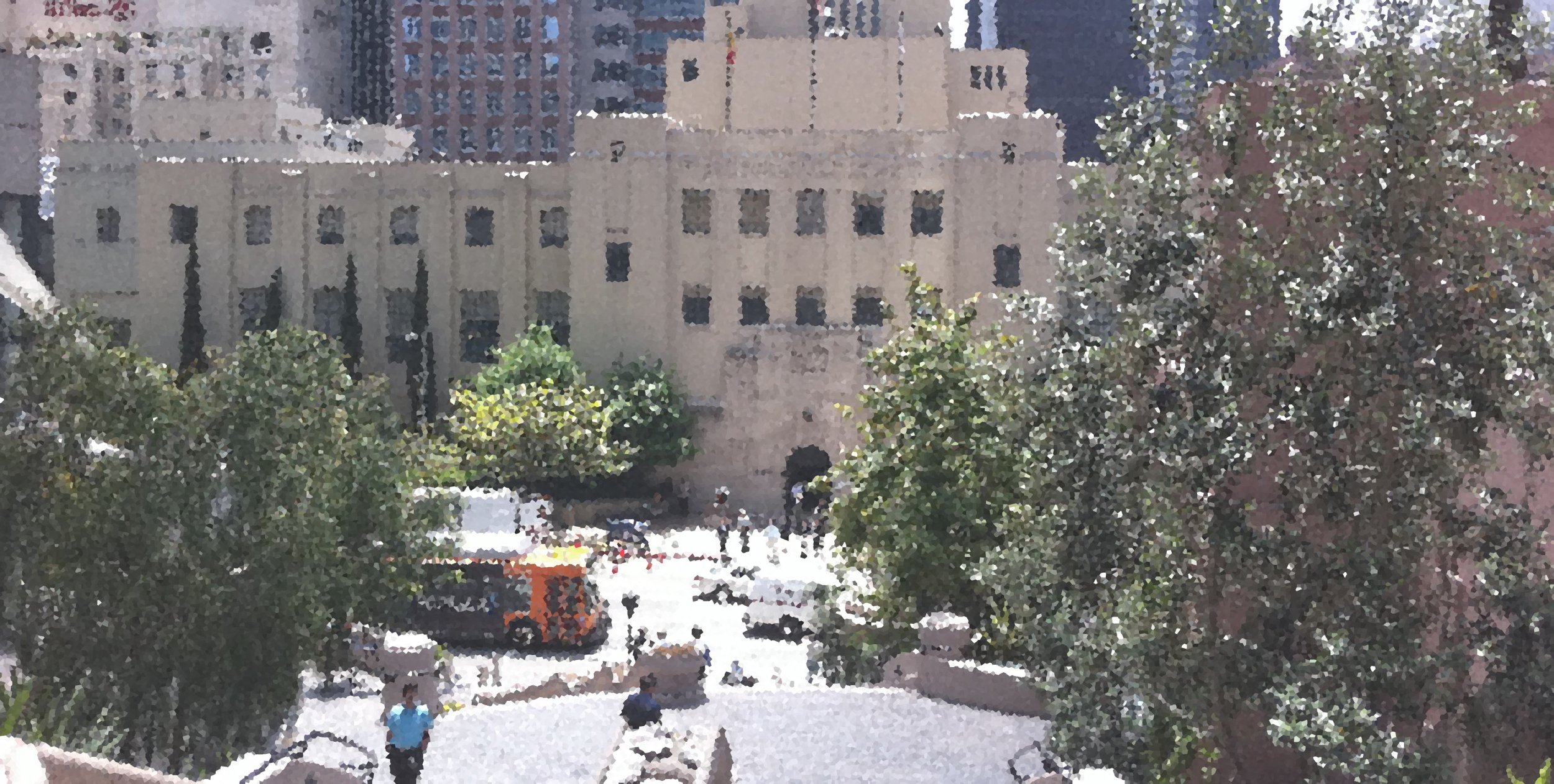THE CRAFTED CITY ARCHIVES
BUILDING CITIES IN A DEMOCRACY
In the United States of America, we believe in a democracy based on the rule of law. The thought is that the rule of law will create a better society, one that promotes Life, Liberty, and the Pursuit of Happiness. As civilization has progressed, no-one seems to have come up with a better idea.
Taking this idea, and translating it into how we make cities, the Democratic choice and the rule of law guides us to build in one of two ways, and in America, we've done both.
LONDON
It is a place where successive generations layer their city building atop what their predecessors built. Old buildings and infrastructure are honored and preserved, but are kept alive by new adaptations within the preserved structures.The character and history of the place are realized everywhere you look. Yet the hand of the current generation of designers is also everywhere. The past is honored and preserved, and yet the excitement of the new is also clearly at hand.
CONNECTING TO THE HIGH LINE
The High Line in New York is a public way, a kind of a street. By no means does it replace the street at grade, in function, nor in its full relationship with the surrounding buildings. The original trestles and freight rails did respond to a particular 'need' that the surrounding buildings had, that is, the movement of goods to and between them. Over the years this need faded away; eventually it was creatively repurposed to fill the need for new York's inhabitants to move around on foot, in an outdoor and public space that provided a calming antidote to the bustling city life. So in claiming public access, providing up-and-over connectivity, and in continuing (albeit in a different way from the trestles) a relationship with the surrounding buildings, the High Line becomes a substitute street.
A MORE USEFUL PARAMETRICISM
Current advanced thought in the architectural world and associated academia proclaims that computer design can take us to places in architectural form that past practice could only dream about, and it because it can done, it should be done.
Here's another idea…
NEW ORLEANS
Its people tend to prefer buildings that play along with the agreed upon architectural style, but there has always been some room for the adventurous and creative. Alas, there has also been an element of the crass and carelessly expeditious. Things decay, and sometimes they are blown away, and they are lovingly brought back, or stuck together with plywood and caulk and painted chartreuse to honor Mardi Gras.
VISITOR TO A CITY
If a city is filled with all of the varying things of commerce and amenities, but can't offer it's inhabitants a complete experience- with transportation, and places to live, work, and recreate in reasonable proximity, it is not functioning as a complete and whole city. If the shape and form of the city are not a pleasure and inspiration to move through, then it isn't a fully formed city. The visitor judges a city, and determines if it provides a whole experience. But the people who inhabit a place need the same things, if it is going to be a place that we truly love and can function in.
THE BEST USE OF RESOURCES
With a few exceptions, city builders of the 'civilized' world are confronted with considerable rules to follow, and clearances to be reviewed, in order to be allowed to build a project. These are processes devised for the public good, established to enforce the public will, to make manifest the political power of government, and to greatly influence and control what may be constructed within a community. They are also processes that happen to squander our resources, and hamper us (all of us) in building the best possible cities.
LAYERS
Cities that are more than a generation old take on the characteristics of layering, exhibiting the slices of life and its physical trappings of their years. New buildings are constructed next to old, renovations are made on top of existing structures needing repair, and there is the introduction of new uses in structures to take the place of the obsolete…
CAN'T WALK
"Which is what walking in America has become: An act dwelling in the margins, an almost hidden narrative running beneath the main vehicular text. Indeed, the semantics of the term pedestrian would be a mere curiosity, but for one fact: America is a country that has forgotten how to walk."
GREATER MULTI-FAMILY
The quality of multi-family housing around the world isn't what it could be. All of it could be improved, especially with regards to what is available to low and moderate income people.
APPLE STORES
Apple stores are textbook cases for how buildings and businesses can contribute and make a good city. They add substance and interest beyond their initial functional purpose; they are conceived and constructed with the deepest care. Although they take on a machine-like character, they are executed with considerable skill, lavished with attention to detail, and are well loved by the designers, builders, and the ones writing the checks. They are ultimate crafted urban element, a gift to each place that makes a home for them.
UN-CRAFTED CITY
"Without identity, a sense of both personal and community pride is lost. Though the various posters that are up around the city advertising new developments present them in a nice, clean, friendly and liveable condition, the architectural production they depict seems to lack inspiration."
A TALE OF TWO CITY PROJECTS
Two projects, similar types of urban design philosophies, one loved, the other… not.
CITIES ON THE EDGE
"Cities are brokers of complex truths, the result of decisions that are registered on their very surfaces. Three exemplars in this regard are New Orleans, Detroit, and Phoenix; in Detroit parlance- the “New Big Three.” These cities are serving as the scouts for the rest of the nation as they confront some of our most pressing challenges."
EVERYTHING WE WANT
Shopping can be frustrating, or an exercise in spending too much, but we also know that it can be richly pleasurable. What about finding a way to go back to that local shop, a place that happens to be easy to get to (maybe even walk to!), has the stuff we want, and is priced well? That is certainly a way to incite pleasurable shopping. It would be a difficult, yet delicious problem to solve-perhaps never completely solvable (that's why it's 'unobtainable'). The diverging forces of processing and manufacturing, transport and marketing don't make it easy, and it's getting more difficult every day. Yet this may be the time to try and achieve it.
ARCHITECTURE OF THE EXPERIENCE
All of our waking moments, and even in our dreams, we exist in, or are moving through spaces within the buildings, or within the great outdoor room. From the smallest room inside one of our buildings, to the grandest and most open of outdoor spaces, we live in a series of spaces.
SPECIAL URBAN PLACES
We know that these places exist around the world. We glimpse them. The narrow passageway into the sunlit courtyard in the French Quarter in New Orleans. The pocket park in the middle of Manhattan. The rooftop garden above the 40th floor in Chicago or Shanghai.
THE ROLE OF TRANSITION
Putting visitors in the right state of mind to enjoy this place cannot be overestimated in its importance. The forecourt experience, a welcoming semi-public space, which immediately disarms the visitor, and quietly asks for them to leave their 'busy city people' persona behind at the portal, is also exactly the thing that is needed to prepare people for the experience inside.
CREATIVE DESTRUCTION
From someone who advocates keeping, renewing, and repurposing the existing city fabric (the layering of buildings and infrastructure accumulated over time), the notion of offering up something called creative destruction as a solution for solving city design issues naturally incites some suspicions.
AN EMERALD BRACELET
"Beneath the trail the city [Chicago] has been busy assembling a series of parks at grade that are to become access points, including one in the Logan Square neighborhood that opened on June 4. Eventually, the trail will have an access point every quarter to a half of a mile. “We really think of this as an archipelago of green space,” said [Ben] Helphand [board president of Friends of the Bloomingdale Trail]. In addition to Logan, some existing parks will also be incorporated, such as Churchill Field Park and Walsh Park, which will expand north as part of the plan. A park at Milwaukee Avenue is being greened. Other parks will be at Kimball Avenue and at the terminus at the McCormick Y. Other access points will be at Maplewood and Mozart avenues but there will not be parks."




















